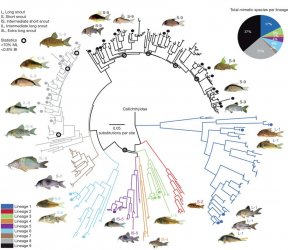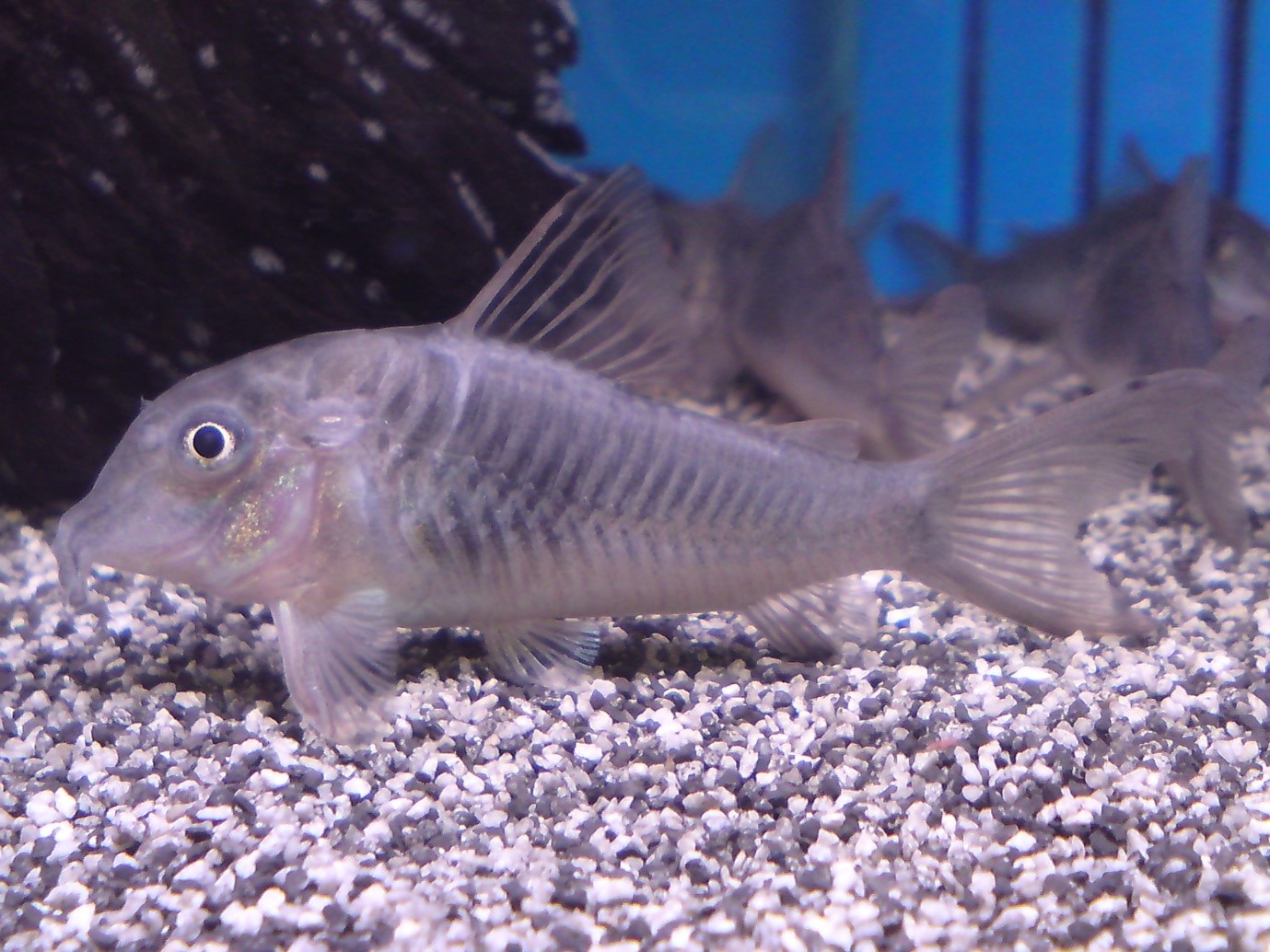Are the corys in lineage 7 all descendants of the C. aeneus (Bronze cory)?
No. Each species within each distinct lineage has evolved from the same common ancestor, not from species within the present lineage. An evolutionary lineage is a line of descent of a taxon (which may be a species, genus, family) from its ancestral taxon. The Callichthyidae family has two subfamilies first defined by Hoedeman in 1952, the Callichthyinae and the Corydoradinae; the latter contains the
Corydoras, Aspidoras, Schleromystax, Brochis genera which together hold some 90% of the species in the entire family--170 described, not including the dozens of "C" and "CW" number possible species. Alexandrou & Taylor (2011) suggest that the group are likely very old, with a fossilized
Corydoras (
Corydoras revalatus) described from the Maiz Gordo Formation of Argentina (Cockerell, 1925), dated from the late Paleocene.
The first
Corydoras species described in this genus was
C. geoffroyi Lacepede, 1803 and he designated this species as the type for the new genus.
C. aeneus (Gill, 1858) was originally described as
Hoplosoma aeneum by T.N. Gill in 1858; I believe it was moved into
Corydoras by Nijssen and Isbrücker (1980). Unless there is another species I am not aware of that predates, once the lineages are sorted out, the actual genus
Corydoras will have
C. geoffroyi as the type species, since the rules of the ICZN require that the oldest name assigned to the genus must prevail. This is lineage 1 and as I say it retains the genus name.
The "aeneus" group of species are lineage 7, and will have a new genus name, presumably (Alexandrou & Taylor, 2011)
Osteogaster (Cope, 1871) with
C. eques Steindachner, 1876 as the type species for that genus; since the genus name will change, the species will then be known as
Osteogaster eques (Steindachner, 1876). The parenthesis around the describer's name signifies that the genus has changed since the species was first described by that individual.
I have a chart showing the phylogenetic relationships of this subfamily; I must give credit properly, and I believe it came from Ian Fuller.




